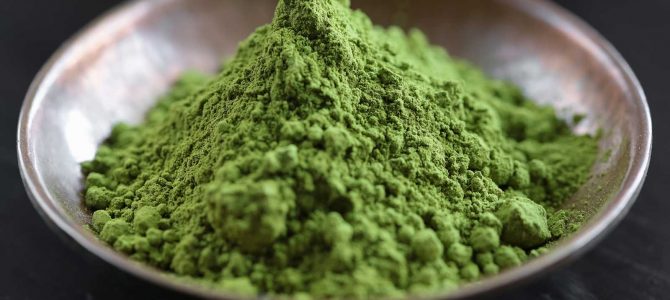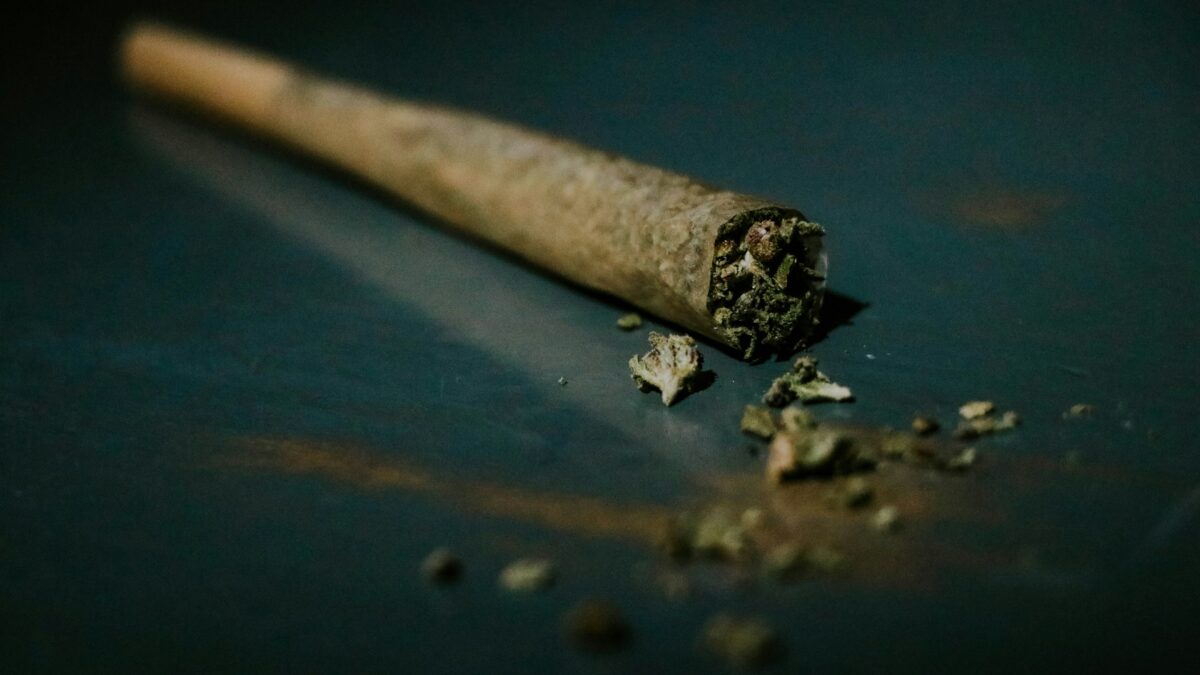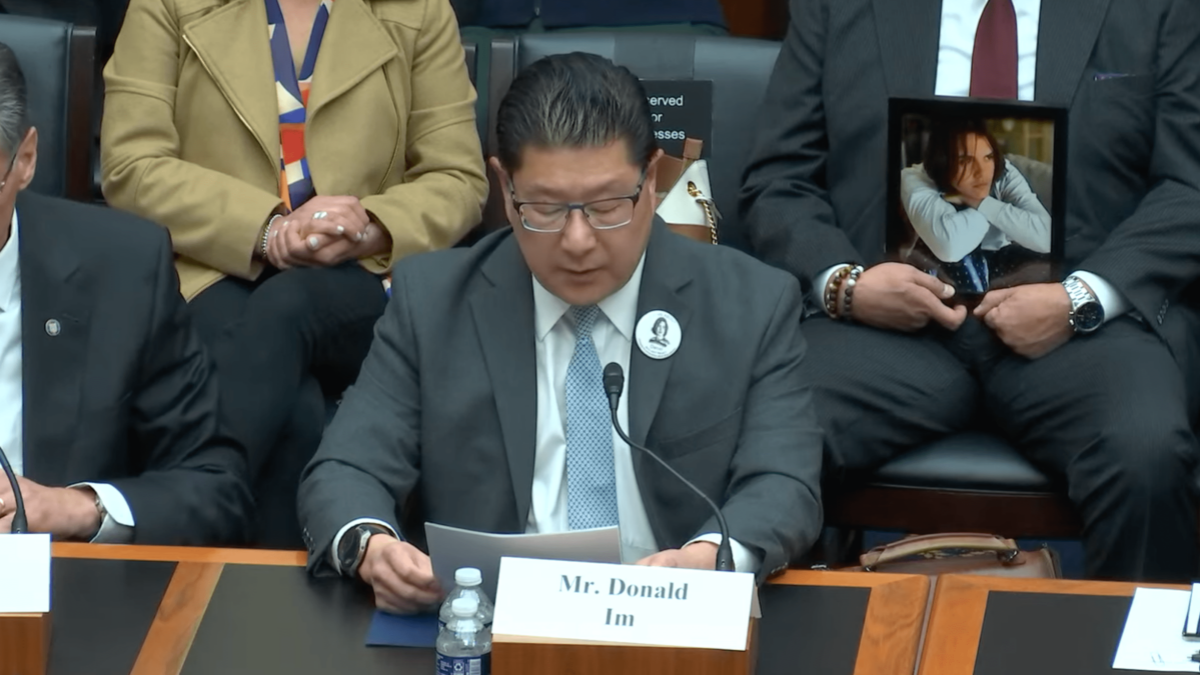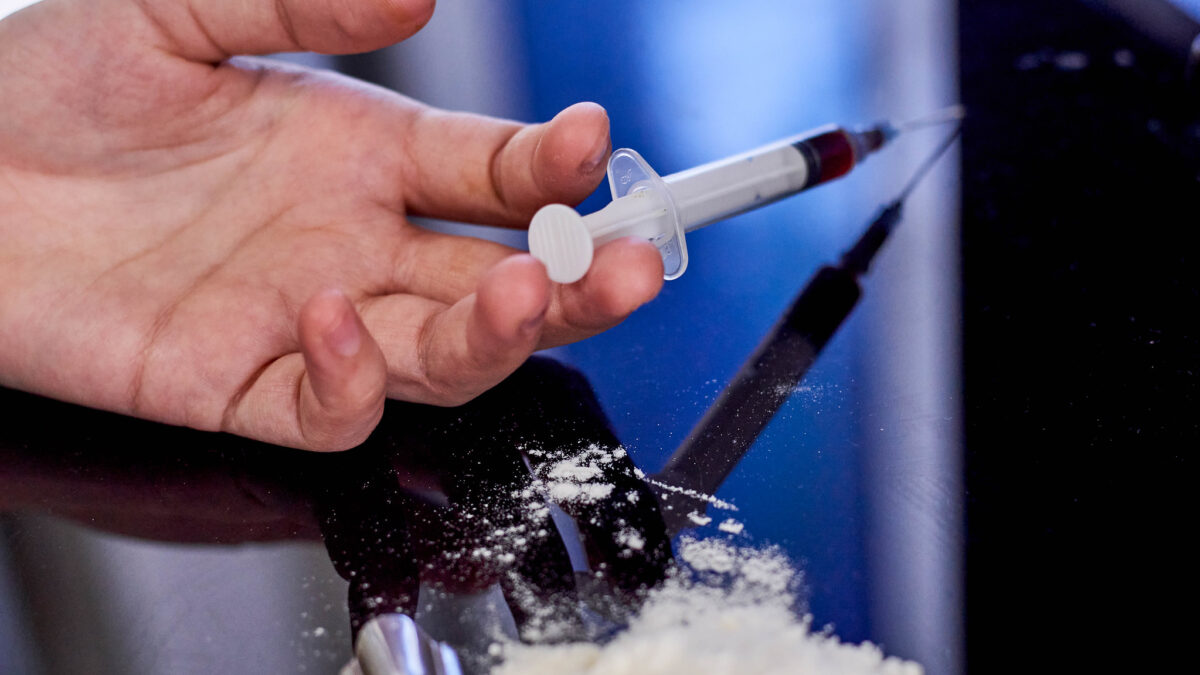
Once Andrew Turner learned of the Drug Enforcement Administration’s plan to ban the medicinal herb he uses to manage a host of medical issues, he did what many activists do: recorded his personal testimony and put it up on YouTube.
The Navy veteran didn’t just tell his story; he could actually show what life without Kratom was like for him. Turner suffers from combat-related disabilities, chronic pain, post-traumatic stress disorder, Meige syndrome, and dystonia. He takes a small amount of powdered leaf from the Kratom plant once daily to treat his conditions.
In October, he stopped taking Kratom for six days and recorded his deteriorating condition to demonstrate “what the reality of a Kratom ban looks like.” On day five, excessive blinking, a twitching brow, and swallowing interrupted his speech. His speech was slow and labored. “This is what I’ll have to face” if Kratom is banned, he says, since “the pharmaceutical measures don’t really help; they typically make these issues a little bit worse.”
By day 6, a rapid succession of tics pull and twist his facial expressions, and his stuttering is uncontrollable. “If this continues on,” he says, “within a few more days I’ll probably have complete inability to speak…[and] the pain I woke up with this morning was very unbearable.”
Thousands Share Andrew Turner’s Story
Though Meige syndrome isn’t common, what binds this veteran’s story to thousands of other testimonies from Kratom users is how taking Kratom has allowed them to stop using prescription opiates, or avoid them altogether. As Turner explains: “For a long time I’ve worked with doctors and the DOD to manage my symptoms…turned out that with just a little bit [of Kratom] each morning, I was able to stop using opiates…large amounts of vicodin, Percosets. I haven’t taken any in months…I can do things on my own again without others helping me.”
Many veterans have found success using Kratom to treat chronic pain and PTSD, as founder of American Kratom Association Susan Ash told U.S. News and many wrote to the DEA when it opened the potential regulations for public comment. Abraham, a former U.S. Army sergeant, wrote, “It is one of the only medicines that help tremendously with my PTSD without being hepatotoxic…I had multiple buddies with whom I worked with who were at risk for suicide. They were introduced to Kratom and now are living normal lives.”
Many veterans’ stories can be found on YouTube under the hashtag #IAmKratom. Josh, a disabled veteran with two back surgeries, anxiety, and PTSD told viewers how he “walked around feeling like a zombie” on the 12 medications the military hospital had prescribed him before he switched to Kratom. “I feel better in these 3 years that I’ve had Kratom than the six years before that,” he said.
Curtis, a disabled infantry Army vet, said he was put on pharmaceuticals to help with PTSD and opiate painkillers to manage his chronic pain. “It was a pretty bad time for me…I decided to give [Kratom] a try, and within the first two hours of having my first spoonful, my pain was almost completely gone. Over the first few weeks, my crushing depression and anxiety had started to go away.” He says now he doesn’t take any other medications and can provide for his family.
Ash says she uses Kratom to treat chronic pain from Lyme disease and broke her addiction to opioids with its help. Many other non-veterans testified to its efficacy in managing pain. One woman, 48, wrote, “I suffer excruciating, haneous [sic], debilitating pain EVERY minute of every day. Kratom stopped it dead in its tracks. I am now LIVING. I work again, I’m a mother again, a wife again.”
Is This Leaf Akin to Heroin or Ecstacy?
Thousands of such consumers spoke out when in August 2016 the DEA notified the public of its intent to add the alkaloids mitragynine and 7-hydroxymitragynine to the Schedule I category, a decision “necessary to avoid an imminent hazard to the public safety.” This would have put the ancient herb from Southeast Asia in such unsavory company as heroin, ecstasy, marijuana, and other drugs determined by the DEA to have, “no currently accepted medical use and a high potential for abuse.”
The DEA has the power to immediately ban a drug, then issue permits for its use as they see fit. Placing Kratom in the Schedule I category may seem drastic considering its comparatively mild nature to other Schedule I drugs, but that’s the only category into which DEA can place drugs if it wants to ban them quickly without express permission from Congress.
Journalist Anthony Roberts reported that within the first week alone more than 100,000 people signed the petition to keep Kratom unscheduled. More than 23,000 posted comments with overwhelmingly positive feedback.
Turner says vendor sales estimate that between 3 and 5 million people in the United States have tried Kratom, and the market is growing. More than 55, 000 kilograms of dried Kratom leaves and powder have been encountered “at ports of entry” to the United States between 2014 and 2016.
After the massive outcry from Kratom users, on October 12, 2016 DEA withdrew its plan to schedule Kratom. Spokesman Melvin Patteson said the reversal is “something we’ve never done before.” DEA opened another public comment period and requested that the Food and Drug Administration do an “8 factor analysis” before making a scheduling decision. That analysis has yet to be conducted, but an eight-factor analysis commissioned by the American Kratom Association and performed by PinneyAssociates found Kratom “appears overall much safer [than opioids].”
According to Dr. Jack Henningfield, one of the analysis’ authors, “Its favorable safety profile supports continued access by consumers to appropriately regulated products while research on its uses continues.” So prospects look brighter for the botanical than they did just a few months ago.
Other Benefits and Effects of Kratom
The leaves of the plant in question (Mitragyna Speciosa) have purportedly been used by natives for millennia and, more recently, by U.S. consumers for its calming and analgesic properties; often as an alternative to prescription opioids.
Kratom is fairly inexpensive. A low dose (2 grams) of Red Bali Kratom costs about $1, which is much less than what many people spend on their morning coffee, and closer in price to Advil than many prescriptions for chronic pain. One Kratom user wrote her medications for managing the pain of fibromyalgia were “more than her disability check.” “It’s such a cheap substance,” explains Turner, “You’re not going to have people breaking into homes to finance their Kratom habit.”
Previous analysis conducted by researchers at the University of Rochester of personal experiences aggregated on Erowid.org (“a psychoactive substance information site”) found among Kratom’s effects, “what appears to be a mild (i.e., relative to opiates) dependence syndrome.”
But some Kratom users report dependency as a real struggle, some saying it suppresses their creativity and heightens complacency. One user who described himself as “addicted to Kratom for 2 and a half years, typically at 20-25 grams a day” commented on Reddit, “Kratom made me complacent and sloppy, but also stifled my creativity. It’s funny how when you are on kratom your standards sink so low. There’s this weird complacency like ‘since I feel good anything I do is good enough.’”
Another quitter described the plant as “the green deception” and “a puppeteer.” Still another recreational user reported insomnia, depression, anxiety, and hot and cold sweats while withdrawing from use of 8-12g a day—an amount Turner equates to “shoveling it down” and “chasing a big-time high.” Other users report consumption upwards of 30g a day.
Reddit contains multiple threads of negative Kratom experiences, especially withdrawal symptoms. Notably, many are from users who do not report using Kratom to treat pre-existing conditions, report consuming very high doses, or are also on other medications (for instance, the user who reported insomnia was also taking Prozac). Such instances would support the DEA’s position that Kratom is “being abused for its opioid-like properties.”
“It still has risks just like anything one ingests,” Turner said, warning against trying Kratom before doing the research or “chasing a high that just really isn’t there.” “There is no actual high from kratom that you could dare compare to even the mildest opiate,” Ash told U.S. News.
In low doses (roughly 2-4g), Kratom has a stimulating and “uplifting” effect, and some consumers say it gives them focus and a slight boost of motivation. In higher doses, it tends to act as a depressant and an analgesic, and it is the efficacy of Kratom in this regard that recovering opioid addicts generally testify to. Of all the appeals to keeping Kratom legal, its ability to decrease or eliminate opioid users’ dependence is the strongest.
Kratom Could Be an Exit-Ramp Drug
One man, who became addicted to opium poppies and then to heroin, said of the plant: “Kratom took someone who had no desire, at all, to stop using opiates and allowed me to quit heroin cold turkey, and remain opiate-free for over six years (and counting).”
Kristofer also described his experience breaking free of narcotics, “the side effects [from his medication] were absolutely awful…I was headed to the point where I was going to have to be on disability for the rest of my life. I started supplementing Kratom into my diet as needed, and it completely changed my life as well. I have experienced zero side effects, and it has helped me turn my life around to the point where I am able to work a full time job (40 hours+ a week), and provide for my family like I have never been able to do before.”
The nation is in the throes of an opioid crisis. The Centers for Disease Control (CDC) reports that more than 33,000 people died from opioid use in 2015, an increase of 72 percent from the previous year, and a figure almost on par with the total traffic fatalities for the same year (35,000). Prescription opioids are powerful, and powerfully addictive. The prescription drug fentanyl, for instance, is “50 times more powerful than heroin,” as noted by CNN. Narcotics prescribed to treat moderate to severe pain have funneled many thousands of ordinary people into addiction.
Such highly addictive painkillers as OxyContin and Codeine are the widest gateway to heroin addiction. Amid this overwhelming opiate crisis, the DEA attempted to schedule Kratom as a drug with “no medical use,” with “no investigational new drug applications or approved new drug applications” for its main alkaloids, although the authors of the DEA’s three-factor analysis of Kratom acknowledged the plant’s analgesic properties and noted “Kratom has also been used to self-treat chronic pain and withdrawal symptoms from opioid misuse and dependence.”
The DEA also cites in the same document the increasing number of Kratom-positive blood or urine samples at private labs, which has gone from 31 positive results in 2012 to 555 positive results for 2015 through March 2016. DEA says this demonstrates rising concern over “the growing abuse” of Kratom products. The administration also cites a “tenfold increase in the number of calls received [at poison control centers] between 2010 and 2015” as evidence of growing Kratom abuse.
Compare Kratom’s Effects to Those of Competing Drugs
Of course, the strongest evidence supporting their case that Kratom use constitutes an “emerging public health threat” would presumable be 30 “Kratom associated deaths,” for all recorded years.
The DEA’s notice of intent and three-factor analysis calls all Kratom users “abusers.” But “abuser” isn’t found in the list of legal terms for the Controlled Substances Act; neither the FDA nor the DEA have a legal definition for “abuse,” much less “high potential for abuse.” The terms “abuse” and “abuser” are political, flexible enough to fit over an entire group of consumers regardless of the method or purpose of the product’s usage by the individual.
But to compare Kratom abuse to that of opioids, we’ll employ a common definition of drug abuse, such as, “Compulsive, excessive, and self-damaging use of habit forming drugs or substances, leading to addiction or dependence.”
According to national survey data from the Department of Health and Human Services, substance abuse for prescription pain relievers totaled roughly 2 million, and substance abuse for heroin totaled about 591,000 in 2015. That same year, there were, “20,101 overdose deaths related to prescription pain relievers, and 12,990 overdose deaths related to heroin,” according to the American Society of Addiction Medicine. Of course, the most obvious sign of abuse are overdose fatalities: ODs from prescription pain relievers quadrupled between 1999 and 2014.
By contrast, the DEA could point to only 30 recorded deaths that had anything to do with Kratom. According to the CDC’s latest data on the opioid epidemic, the deaths by opioids in 2015 alone are 1,100 times higher than all recorded deaths that had anything to do with Kratom. Also, in all but one of those deaths, other substances were found in the systems of the deceased, (including amphetamine, heroin, methadone, and fentanyl).
As for other indicators of Kratom abuse, 660 Kratom-related calls to poison control centers were recorded between 2010 and 2015. But the CDC study of these calls the DEA cites, by their own admission, determines a correlation between the 50 severe outcomes “and exposure to Kratom plus other substances.” The three-factor analysis could point to a few cases, but no statistics or aggregate data, on other indicators for abuse, such as emergency room admissions or treatment facility admissions.
How About Regulating Before Banning?
Even if one disputes the DEA’s claim that Kratom is widely abused, the Kratom market is “the wild west” in terms of regulation, as Turner acknowledges. The three-factor analysis notes that Kratom products are often marketed as a “legal high,” and falsely labeled. There is no recommended dosage amount, either. The DEA’s original scheduling notice cited lack of regulation as one of Kratom’s dangers.
Yet why try to ban Kratom before considering common-sense regulations? Turner said he and many other Kratom advocates would like to see more common-sense regulation of Kratom, such as restricting the age for purchase to 21 and over, and ensuring the Kratom supply isn’t tainted with harmful chemicals and that the contents are true to the advertised ingredients.
A first step toward this end would be submitting Kratom as a “new dietary ingredient” to the FDA, which includes submitting evidence that Kratom is safe to consume. “I’d love to see the government come in and say we need to have some testing. I’m okay with some oversight,” says Turner, “But there’s a fine line between oversight and overreach.”
Why Did the DEA Try to Ban Kratom?
When the government attempts to ban a substance seemingly out of nowhere, without previous widespread media coverage of the issue or public outcry, often the first suspects are other key players in the industry.
Journalists and Kratom advocates have pointed to Dr. Daniel Fabricant as a force behind the proposed ban, as arguably Kratom’s most outspoken critic. In 2014, Fabricant directed the FDA’s dietary supplements division, and that year the FDA began seizing Kratom imports. In April 2014, however, Fabricant became CEO of the Natural Products Association. NPA senior vice president Corey Hilmas is also an FDA transplant.
Since 2014, Fabricant has been nudging regulators to crack down on Kratom. I spoke to Dr. Fabricant, who maintains the botanical should still be scheduled because it exhibits opiate-like behavior.
“If you’re going to make a claim that it’s a cure for pain, no way is that a dietary supplement,” he said. He chastised advocates for self-treatment. “You’re going to self-diagnose treatment of addiction? There’s no a magic bullet for addiction. People from addiction clinics have said people do get addicted to Kratom. You should be working hand in hand with a health-care provider.”
Even regarding the potential submission of Kratom as a “new dietary ingredient,” he explained that the substance, “has to show baseline acute safety, they have to do a toxicity study…and the extra-curricular question is: is it addictive.” In his view, that question is essential. If we do place preference studies for things that sweeten our coffee, why wouldn’t we do that for Kratom?
Fabricant comes across as passionate and sincere about his position. It’s worth noting, however, that some of the NPA’s member companies make and sell products that compete with Kratom (such as “At Ease” and “Brain Awakening,” and formulas for clear thinking or muscle spasms and tension) and would have an interest in how the botanical is regulated.
“It’s more likely that it’s a fear held by the dietary companies,” said Charles Haddow, a representative from the American Kratom Association, “that if it’s as bad people are saying, that there will be a spillover that affects the division…if there are deaths, that it might bring calls to Congress calling for a new regulatory scheme for the industry.”
Still, it’s not as if the Kratom importers and retailers don’t have financial interests at stake in this regulatory battle. “People supporting Kratom are making a lot of money, but they chastise makers of opiates for the same,” Fabricant pointed out. And research to ensure Kratom’s safety costs money, as the CEO acknowledged. But he insisted the Kratom industry isn’t stepping up and taking responsibility in that regard.
Chief Opponents Include Competing Substance Companies
In July of 2013, three organizations—the Council for Responsible Nutrition, the Consumer Healthcare Products Association, and the United Natural Products Alliance—sent a letter to the FDA expressing concern over Kratom’s lack of regulation. It certainly seems concern from the pharmaceutical and supplement industries triggered the FDA’s interest in Kratom. The FDA’s database reveals no documents about Kratom until a September 2014 news release regarding a Kratom seizure in southern California, and all the firms on the list of products Subject to Detention without Physical Examination under the import alert have dates published 2014 or after.
Cross-referencing the members listed for each organization with a 2012 report on narcotics manufacturers from United Nation’s Office of Drugs and Crime, it is revealed that the Council for Responsible Nutrition represents the pharmaceutical companies BASF, which manufactures the psychoactive stimulants cathine and methcathinone, and the opiate painkiller Tilidine; DSM Nutritional Products, which manufactures Bromazepam, Clonazepam, and Diazepam; and Lonza Inc., which makes the depressant GHB and methylphenidate, a stimulant used to treat ADHD.
CHPA represents Chattem Chemicals (a division of Sun Pharma), which manufactures codeine, fentanyl, methadone, morphone, oxycodone, sufentanil; and Purdue Pharmaceuticals, the manufacturer of OxyContin. Teva Pharmaceuticals is also a member through their division “Teva Women’s Health”; Teva makes a generic for Actiq, a drug containing fentanyl, as well as oxycodone tablets.
The UNPA represents companies on the natural side of the industry, including Indena USA, which makes extracts from plants like chamomile and Devil’s Claw (used to treat muscle and back pain and migraines), and Morinda, which sells “natural” products, including energy drinks and focus supplements. These drugs overlap with Kratom as treatment for an array of symptoms, and some of the UNPA’s members compete with Kratom for its “perks,” such as focus and energy.
The pharmaceutical companies are heavyweights: BASF is No. 94 on Forbes’ list of the world’s biggest companies, and in 2015 its nutrition and health products generated 2.1 billion. Purdue generates about $3 billion in revenue annually, mostly from OxyContin sales. Chattem’s parent company, Sun Pharma, brought in about $403 million from U.S. sales in 2013.
Why wouldn’t these companies monetize the herb themselves instead of pushing for a ban? I asked Turner. Certainly their R&D budgets could create a Kratom product superior to a bitter green powder shipped to consumers in unmarked Ziploc bags or sold as powder capsules in head shops.
Yet the number of alkaloids in the Kratom leaf (37, according to Fabricant, but sources differ) and their short shelf life once extracted would make manufacturing a synthetic version quite difficult. Even if such companies were selling simple extracts or powder capsules, Turner explained, it would take decades to grow a commercially viable domestic crop, and in the necessary tropical climates like Hawaii or Guam. Large-scale importation would be expensive to start up, too, especially with pre-existing regulatory barriers: the FDA would first need to approve Kratom as a safe dietary ingredient.
To complicate matters, regulators might require Kratom sellers to change the formulation to sell kratom products as supplements. According to Fabricant, that would mean they’d have to make an extract without the “addictive” main alkaloids. This would be another expensive step, and might render the product impotent.
So large pharmaceutical companies that manufacture prescription opioids would be more than sufficiently incentivized to use the DEA to push Kratom out of the market. Prescription narcotics bring in significant revenue. Pain medications are a $24 billion global market and Kratom’s position as a more tolerable and effective analgesic for many cuts in on the market.
Despite the DEA’s scheduling halt, the FDA has already ordered more seizures of products containing Kratom this year.
What About Approval Through the FDA?
The agencies that regulate what Americans put into their bodies operate on the assumption that anything that is not scientifically proven safe, to varying degrees of satisfaction as determined by the agencies, must be dangerous. As such, it would be more challenging for drug companies to convince the FDA that Kratom is safe, versus convincing them it is dangerous enough to ban.
When attempting to enter the market, government agencies demand food and drug companies start under the assumption that their product is dangerous until proven otherwise. Hence the lengthy clinical trials and years-long waits for FDA approval. To draw a comparison to criminal court: the drug (or dietary supplement) is guilty until proven innocent.
Now, for experimental drugs synthesized in a lab, this makes a great deal of sense. Its potential effects are unknown, or close to it, and to immediately bottle it up and sell it to sick people would be preposterous. The length and breadth of the clinical trials may be up for debate, but testing isn’t just responsible, it’s an ethical obligation.
But Kratom isn’t an experimental drug, and its effects aren’t unknown. Its psychoactive nature may make some doctors and regulators nervous, but the plant has been used for centuries, and people are using it currently with overwhelmingly positive results.
The regulatory overseers, however, aren’t satisfied with history and anecdotes. Kratom sellers haven’t supplied the toxicity and place preference studies the FDA would want. Other scientific research is preliminary, but university research indicates Kratom’s main alkaloid, mitragynine, could indeed provide an effective “step-down” from opiate addiction.
But government science gets it wrong often enough to warrant serious doubts about its competence in regulating, or even advising, on our behaviors and consumption. Consider that it took the National Institute of Health nearly a decade to reverse guidelines on peanut allergies in children after the first studies challenging the wisdom of their approach were published, or the inflated place of dairy in both the old food pyramid and the new “myPlate” guidelines, or the fact that the FDA has set new sodium guidelines for food companies, despite strong evidence that sodium really isn’t all that harmful.
How About Aiming for Harm Reduction over Abstinence
Abstinence is the chief principle governing the drug war that surrounds Kratom, leading to crackdowns on behaviors as mild as marijuana use, coming down hardest on the suppliers, but punishing users, too. One nurse of 26 years opined, somewhat hyperbolically, that if the DEA really wanted to make a difference, they would dispense Kratom to addicts “who want to get off that destructive merry go round.”
Fabricant believes “We didn’t get to have the safest food supply in the world by letting anyone dump something into the market just because they feel strongly about it.” But Turner is convinced it would be “detrimental to public health” to ban Kratom. To him, enforcing complete abstinence from a substance that is not well-researched in the lab, but that has been overwhelmingly beneficial in the real world, isn’t the answer.
“The addicts have a true chance to get clean,” he said. “There are questions with Kratom, about dependency, but at the end of the day it’s not going to kill anybody.”
The vast regulatory state, with its lack of accountability to both legislators and the public, and its shared pool of expertise with the private sector it purports to regulate, is ripe for exploitation. An agency may justify a budget bump, a corporate giant may rescue a few percentage points of market share, but most often, it’s the consumers who lose. In the case of Kratom, many of those consumers are suffering and even more vulnerable to exploitation.
The fate of Kratom is still in limbo. But may the plant’s close brush with regulatory disaster be a lesson to citizens: the government doesn’t always hold our best interests as a top priority.









